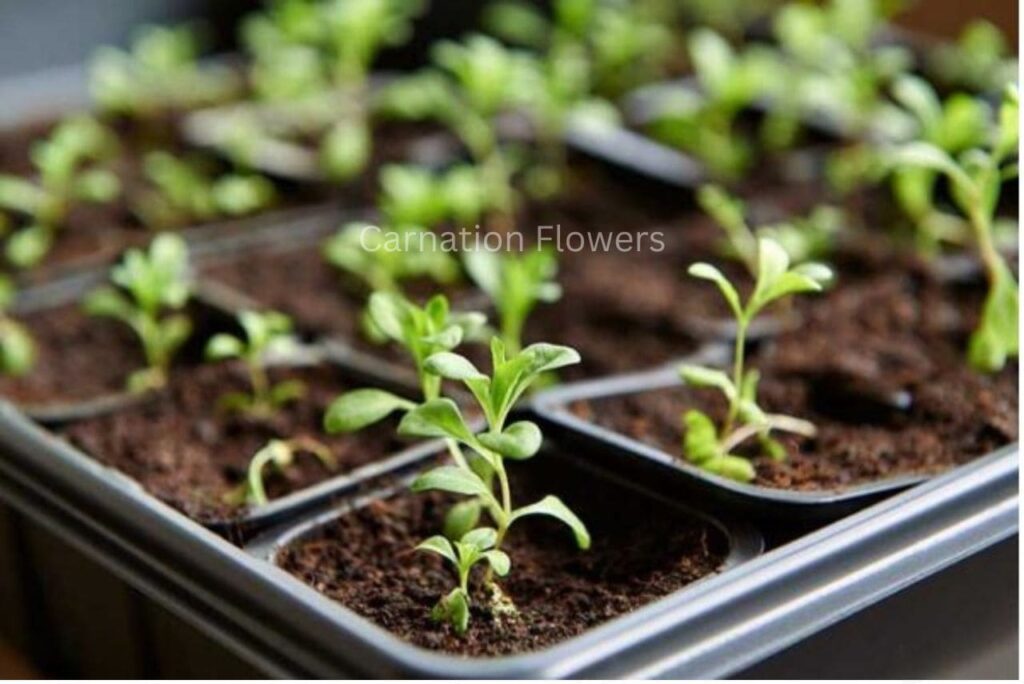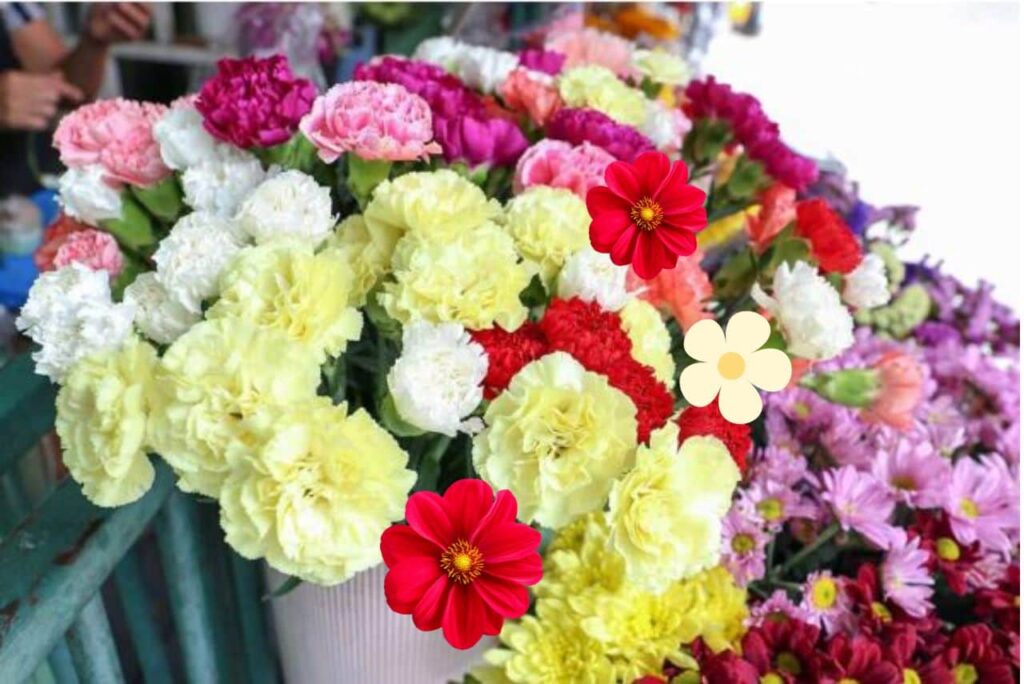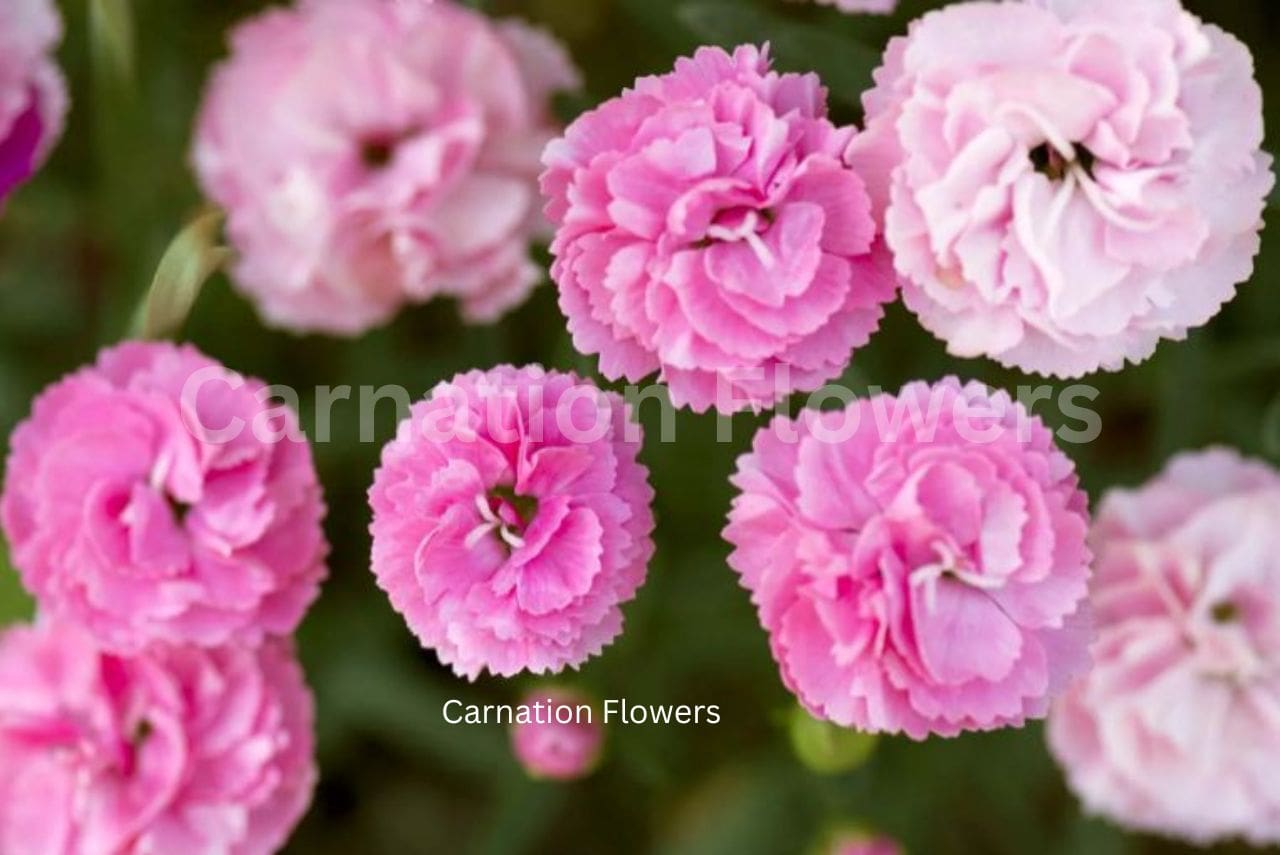Contents
- 1 Introduction to Carnation Flowers
- 2 Benefits of Growing Carnations from Seeds
- 3 Choosing the Right Seeds for Your Garden
- 4 Preparing the Soil and Planting the Seeds
- 5 Caring for Your Carnation Plants
- 6 Common Problems and Solutions for Growing Carnations from Seeds
- 7 Harvesting and Enjoying Your Blooming Carnations
- 8 Conclusion
Introduction to Carnation Flowers
Welcome to the beautiful world of carnations! These delicate and vibrant flowers have been adored, gracing gardens, bouquets, and corsages for centuries. If you’re ready to bring color into your backyard, why not try growing carnation flowers from seeds? Not only will you enjoy their beauty throughout the seasons, but you’ll also experience the satisfaction of nurturing these charming blooms from tiny seeds.
In this article, we’ll guide you step by step through growing carnations from seeds. So please put on your gardening gloves, and let’s get started!
Benefits of Growing Carnations from Seeds

Carnation flowers are not only beautiful and fragrant, but they also offer a range of benefits when grown from seeds. One of the main advantages is cost-effectiveness. Buying carnation seeds is much cheaper than purchasing fully-grown plants or cut flowers from a store. Plus, you have the satisfaction of growing them yourself!
Another benefit is the wide variety of colors and types available in seed form. From classic reds and pinks to vibrant yellows and purples, there’s a carnation seed for every taste and garden theme. You can even find unique bi-colored varieties that add an extra pop to your flower beds.
Growing carnations from seeds also allows you to control their growth habits. You can choose whether you want compact, bushy plants or tall ones with long stems for cutting purposes by selecting specific cultivars.
Moreover, starting your plants from seeds gives you greater control over their health and care. You can ensure they receive proper nutrition by using quality soil mixtures and organic fertilizers.
Growing carnations from seeds offer a sense of accomplishment as you witness the transformation from tiny seeds to beautiful blooms in your garden. It’s an enjoyable process that allows you to connect with nature while adding beauty to your surroundings.
So why not give it a try? Start sowing those carnation seeds today!
Choosing the Right Seeds for Your Garden

Choosing the right seeds for your garden is crucial in growing healthy and vibrant carnation flowers. With so many varieties available, it’s essential to consider factors such as climate, soil conditions, and personal preferences when selecting your seeds.
Consider the climate of your region. Carnations thrive in temperate climates with cool summers and mild winters. Some varieties are more heat-tolerant than others, so if you live in a hot climate, look for heat-resistant or summer-flowering varieties.
Next, think about the type of soil in your garden. Carnations prefer well-draining soil that is rich in organic matter. If you have heavy clay soil, choose seeds suitable for this soil type or amend it with compost to improve drainage.
Another factor to consider is the color and fragrance of the flowers. Carnations come in various colors, including white, pink, red, yellow, and bi-colored varieties. Additionally, some carnation varieties have a sweet scent, while others are more subtle or unscented.
Lastly, plant height, disease resistance, and bloom time should also be considered when choosing carnation seeds.
Many seed catalogs provide detailed information on these characteristics, which can help inform your decision-making process.
By carefully considering these factors, you can choose the right seeds to thrive in your specific garden conditions, resulting in beautiful blossoms all season.
Preparing the Soil and Planting the Seeds
Preparing the soil is one of the critical steps in growing carnation flowers from seeds. Carnations thrive in well-draining soil that is rich in organic matter. Before planting, removing any weeds or debris from the area where you plan to grow your carnations is essential.
To prepare the soil, loosen it with a garden fork or tiller. This will help improve drainage and allow air to reach the roots of your plants. Next, mix some compost or aged manure to enrich the soil with nutrients.
When it comes to planting carnation seeds, timing is crucial. It’s best to sow them indoors about 8-10 weeks before your last frost date. Fill seed trays or pots with a good quality seed starting mix and lightly press down on each so they are firmly planted.
Sprinkle your carnation seeds evenly over the soil’s surface and cover them with a thin layer of vermiculite or fine sand—Mist gently with water to moisten the top layer without disturbing the seeds too much.
Place your trays or pots in a warm location where they can receive plenty of sunlight, but avoid direct exposure during peak hours. Keep an eye on moisture levels and ensure not to let them dry out completely.
In around two weeks, you should start seeing tiny seedlings emerge from beneath the soil surface. You can move them into individual pots filled with potting mix for further growth until they’re ready for transplanting outdoors.
By taking care during this stage of preparation and planting, you’ll give your carnation seeds their best chance at germination and successful growth.
Caring for Your Carnation Plants
Once your carnation seeds have sprouted and started to grow, it’s essential to provide proper care to ensure healthy and vibrant plants. Here are some critical tips for caring for your carnations:
1. Watering:
Carnations require regular watering, especially during dry spells or hot summer months. However, be careful not to overwater, as this can lead to root rot. Aim for moist but well-drained soil.
2. Fertilizing:
Feed your carnations with a balanced fertilizer every two weeks during the growing season. This will provide essential nutrients and promote vigorous growth.
3. Pruning:
Regular pruning is essential for keeping your carnation plants in shape and encouraging more blooms. Remove any dead or faded flowers promptly to prevent seed formation.
4. Mulching:
Apply a layer of mulch around the base of your plants to help retain moisture, suppress weeds, and regulate soil temperature.
5. Support:
As the stems grow taller, use stakes or plant supports to keep them upright and prevent breakage from winds or heavy rain.
Remember that each variety may have specific care requirements, so it’s always a good idea to research the particular needs of the type of carnation you are growing.
Common Problems and Solutions for Growing Carnations from Seeds
- Like any other plant, growing carnations from seeds can come with its fair share of challenges. However, with some knowledge and troubleshooting skills, you can overcome these common problems and enjoy beautiful blooming carnations in your garden.
- One common issue that many gardeners face is poor germination. If your seeds are not sprouting as expected, it could be due to improper planting depth or temperature fluctuations. To improve germination rates, sow the seeds at the recommended depth indicated on the seed packet and maintain a consistent temperature range of around 70-75°F (21-24°C).
- Another challenge is damping off disease, which causes young seedlings to wilt and collapse. This fungal infection thrives in overly moist conditions. To prevent damping off, ensure good air circulation by spacing out your plants properly and avoid overwatering. Using sterilized soil and containers can also help minimize the risk of this disease.
- A lack of blooms can be frustrating when growing carnations from seeds. Insufficient sunlight is often the culprit here. Carnations require total sun exposure to produce abundant flowers. Ensure your plants receive at least six hours of direct sunlight each day.
- If left unchecked, pests such as aphids or spider mites may attack your carnation plants. Regularly inspecting your plants for signs of infestation, like distorted leaves or sticky residue, will allow you to take action early on before it becomes a more significant problem. Natural remedies like neem oil or insecticidal soap can control pests without harming beneficial insects.
- Inadequate nutrition is another potential hurdle when growing carnations from seeds. Proper fertilization throughout the growing season will promote healthy growth and abundant blooms. Use a balanced fertilizer explicitly formulated for flowering plants according to package instructions.
Harvesting and Enjoying Your Blooming Carnations
The moment you have been waiting for has finally arrived – your carnation plants are in full bloom! It’s time to reap the rewards of your hard work and enjoy the beauty and fragrance these stunning flowers bring to your garden.
When it comes to harvesting carnations, timing is critical. You want to wait until the blooms are fully open but not overly mature. Gently pinch or cut the stems just above a leaf node, taking care not to damage any surrounding buds or foliage.
Once you have harvested your carnations, it’s time to bring them indoors and create beautiful floral arrangements. Remove any leaves that will be submerged in water and place the stems in a vase filled with clean water mixed with floral preservatives.
To extend the lifespan of your cut carnations, keep them away from direct sunlight, drafts, and fruits as they release ethylene gas, which can cause premature wilting. Change the water every couple of days and trim the stems at an angle every few days to allow for better water absorption.
Enjoying your blooming carnations goes beyond admiring their beauty. Take a moment to appreciate their vibrant colors, delicate petals, and sweet scent each day. Display them in different rooms of your home or gift them to loved ones who will surely appreciate such a thoughtful gesture.
Remember that growing flowers from seeds is a labor of love – patience pays off when you see those bright blooms gracing your garden beds or adorning your vases. So savor this moment of accomplishment as you bask in nature’s glorious creation!
Conclusion
Growing carnation flowers from seeds can be a rewarding and enjoyable experience. Following the steps outlined in this guide, you can successfully cultivate these beautiful blooms in your garden.
From choosing the right seeds to preparing the soil and caring for your plants, each process stage requires attention and care. Ensure adequate sunlight, water, and nutrients to ensure healthy growth.
While challenges may arise along the way, such as pests or diseases, solutions are available to help you overcome them. Stay vigilant and address any issues promptly to keep your carnations thriving.
Once your hard work pays off and your carnations bloom, take the time to appreciate their beauty. Whether used as cut flowers or enjoyed in your garden beds, these vibrant blossoms will bring joy and color into your life.
So why not give it a try? Growing carnations from seeds is an affordable way to add elegance and charm to any outdoor space. With patience, dedication, and a little knowledge, you can create a stunning display with everyone admiring your green thumb skills.
Remember that gardening is an ongoing learning process – don’t be afraid to experiment with different techniques or varieties of carnation seeds. Enjoy the journey of nurturing these delicate flowers from tiny seeds into magnificent blooms!
Happy gardening!
Good luck, Habibi!
Come to the website and explore some mind-blowing content.
- Why Every Fashionista Needs a pork pie hat in Their Wardrobe

- Ultimate Guide to Shopping for parachute pants: Where to Buy, What to Look For

- Exploring the Delicate Flavors of tagliolini Pasta: A Culinary Journey

- Uncovering the Truth Behind blog del narco: A Deep Dive into Mexico’s Drug War

- Exploring the History and Tradition of cempasuchil in Day of the Dead Celebrations

- The Ultimate Guide to boquerones: How to Prepare and Enjoy these Spanish Delicacies






